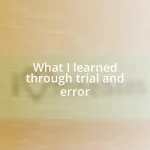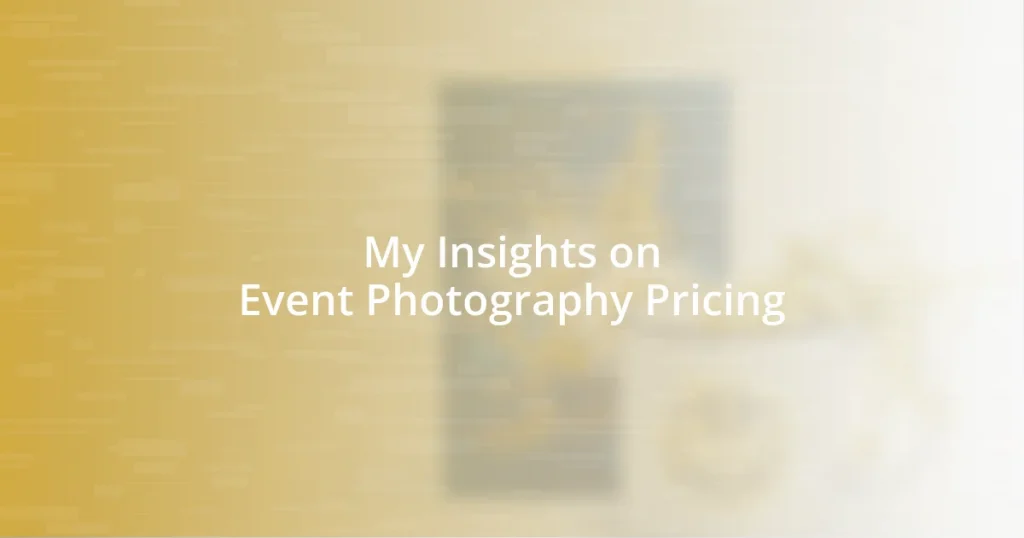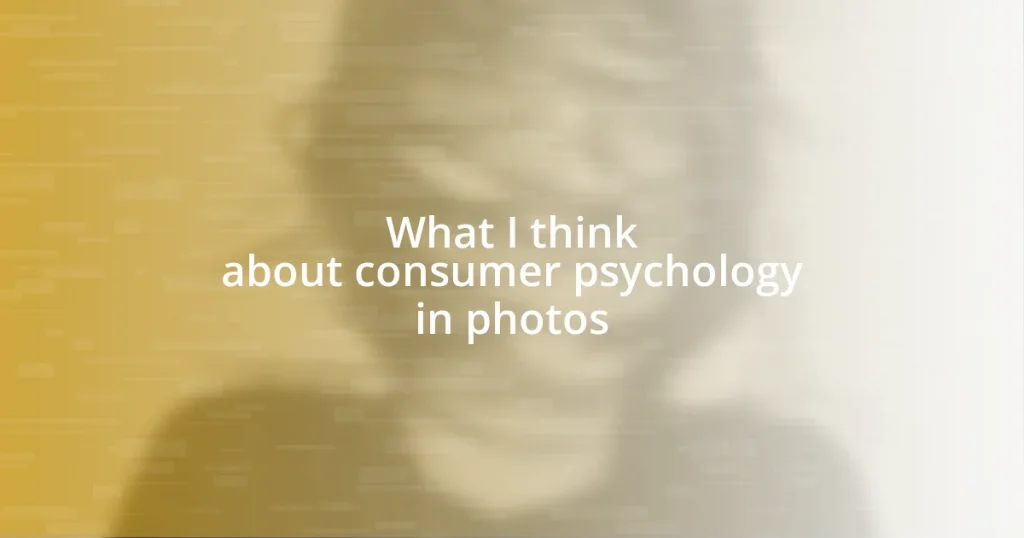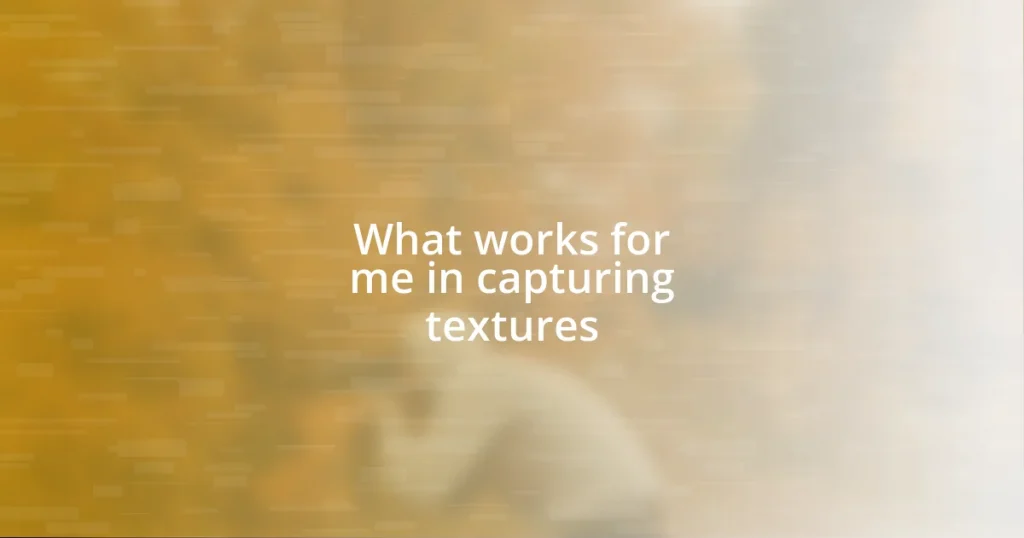Key takeaways:
- Event photography pricing should reflect not only time and expertise but also the emotional significance of the captured moments.
- Key factors influencing rates include the length and type of the event, as well as additional services like retouching and album design.
- Effective negotiation involves transparency, showcasing unique value, and being flexible with offerings to meet client needs while maintaining fair compensation.
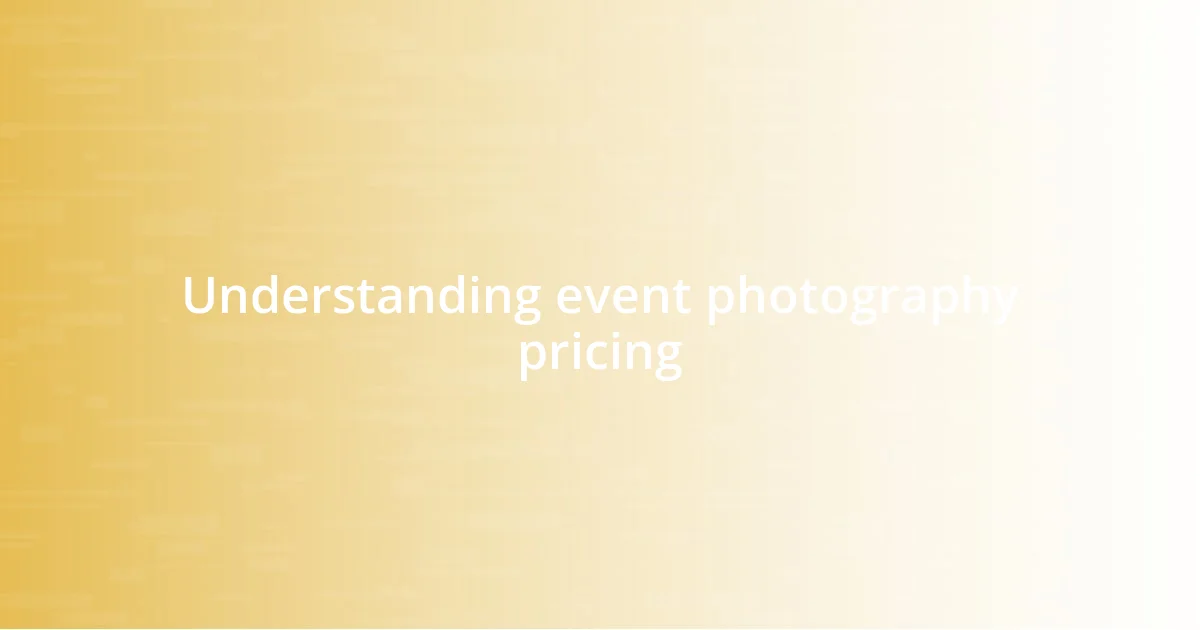
Understanding event photography pricing
When I first started pricing my event photography services, I grappled with how to value my work appropriately. It’s about more than just snapping pictures; you’re capturing moments that hold emotional significance. Have you ever considered how much those memories are worth to someone? The pricing should reflect not just the time spent shooting but also the expertise that allows you to deliver high-quality results.
I remember a particularly colorful wedding where I was hired because the couple saw the value in storytelling through images. The pricing for events can vary widely based on factors like the length of the event, the complexity of coverage, and additional services like retouching or album design. Each of these elements adds a layer of value to your work, amplifying how clients perceive the overall cost.
It’s easy to feel tempted to lower prices to attract clients, but I learned that this often undercuts the value of what we provide. Instead, think about how you can communicate your unique skills and the emotional impact of your photographs. Wouldn’t you agree that investing in the right photographer means securing lasting memories and quality? Balancing quality and cost is certainly a challenge, but it’s essential for sustaining a successful photography business.
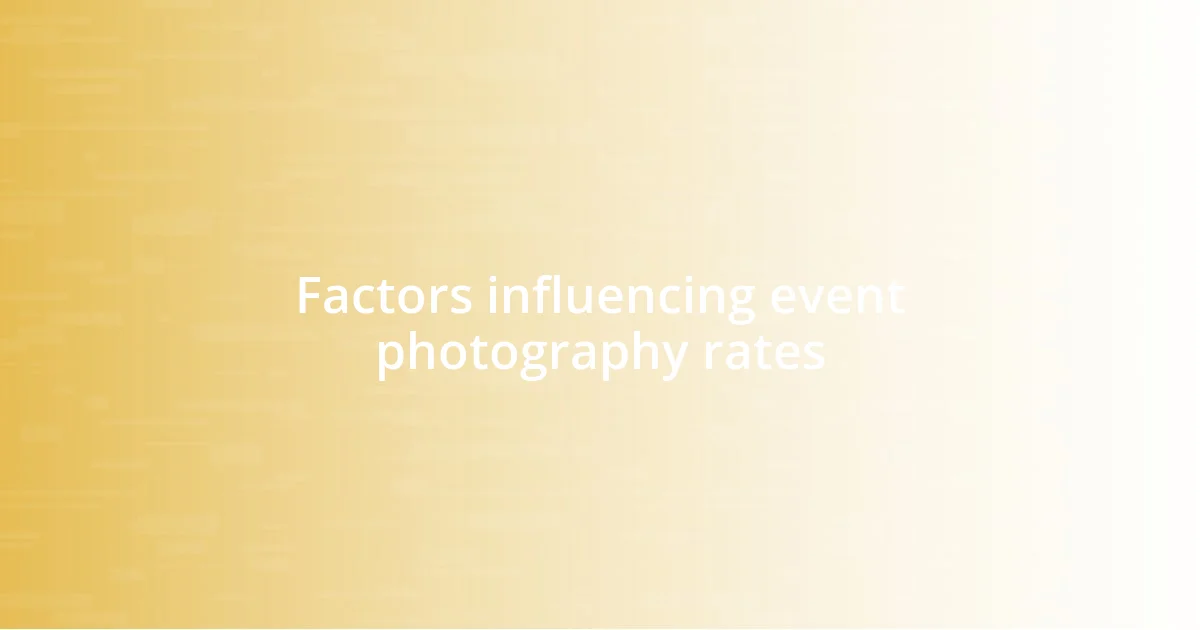
Factors influencing event photography rates
When it comes to event photography rates, several key factors play a significant role. First, the length of the event can greatly influence the total cost. For example, I once covered a multi-day festival where the sheer amount of photography required made it necessary to adjust my pricing accordingly. I quickly realized that the longer I was on-site, the more my creativity and energy needed to be replenished.
Another factor is the type of event itself. A corporate event typically has different expectations and requirements compared to a whimsical birthday party. I recall shooting a formal gala where the client expected not only stunning candid shots but also meticulously posed group photos. This mixture of styles required me to change gears often, which certainly added to the complexity of the project and, therefore, the pricing.
Additionally, other services can dramatically alter rates. Offering photo retouching or custom albums can add considerable value to my package. Once, I provided an album design for a couple celebrating their tenth anniversary, and their excitement reinforced how impactful these extras are for clients. They truly appreciated the tangible memories woven into a beautiful book, which in turn justified my pricing.
| Factor | Influence on Pricing |
|---|---|
| Length of Event | Longer events increase total hours and energy, raising costs. |
| Type of Event | Different events require varying styles and approaches, affecting pricing. |
| Additional Services | Services like retouching and album design add value, influencing overall rates. |
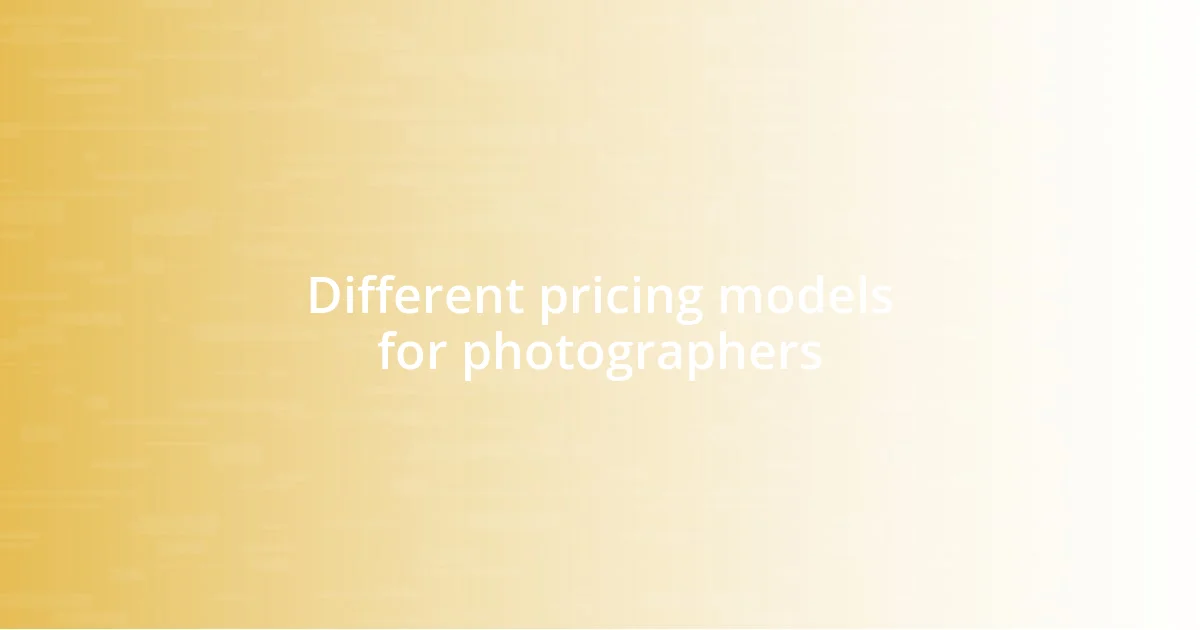
Different pricing models for photographers
One of the core pricing models I often see in event photography is the hourly rate. I’ll never forget the time I attended a networking event and struck up a conversation with a fellow photographer who charged by the hour. It turned out to be quite effective for shorter events where the client wanted to manage costs closely. With this approach, clients pay for the actual time spent shooting, and adjustments can be made if they decide to extend the event on short notice. This flexibility can be a win-win, ensuring that I am compensated fairly without overcommitting from the outset.
Another model worth considering is the package pricing structure. This method bundles various services together for a set fee, which can simplify the decision-making process for clients. I remember a couple I worked with who were overwhelmed by pricing choices. When I presented them a comprehensive package that included the shoot, retouching, and a digital album, they breathed a sigh of relief. They appreciated receiving clear options rather than a complicated pricing breakdown. Here’s a quick look at the most common models:
- Hourly Rate: Charges based on the time spent shooting, allowing for flexibility.
- Package Pricing: Bundles different services at a set fee, simplifying the client’s decision-making.
- Per Image Pricing: Charges clients based on the number of final images they select, providing customizable options for those who want control over costs.
Each model has its pros and cons, so it’s all about finding what resonates best with your style and audience.
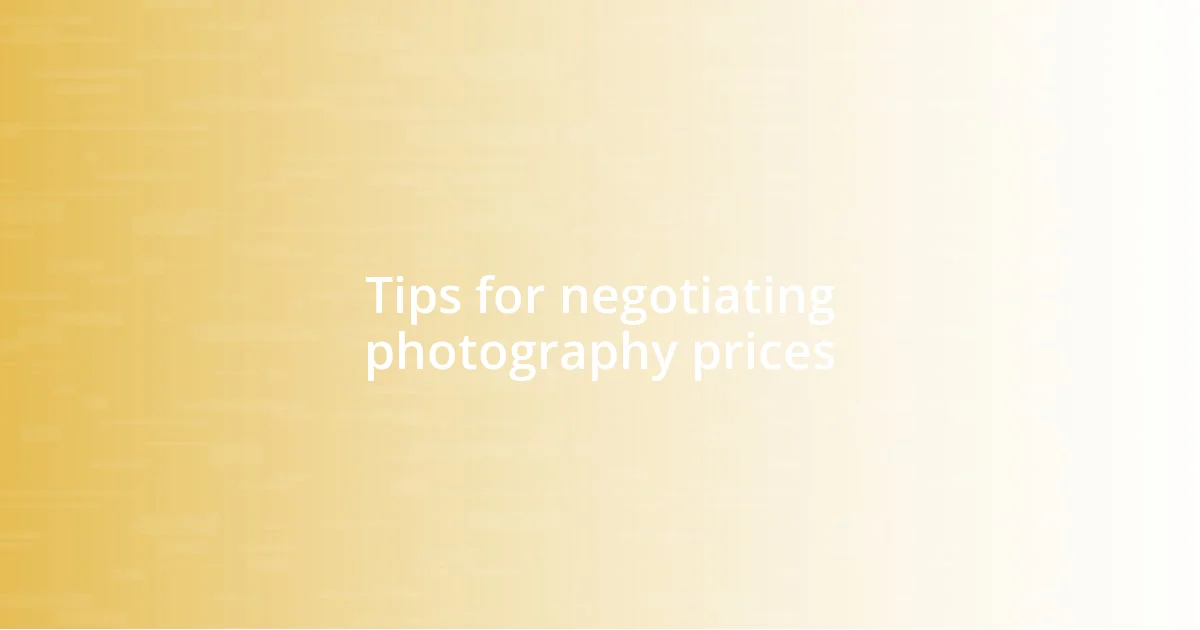
Tips for negotiating photography prices
When negotiating photography prices, it’s essential to approach the conversation with openness and confidence. I recall a time when a client shared their budget constraints upfront. Instead of walking away, we collaborated to adjust the package to fit both their needs and my expertise. It’s incredible how a transparent dialogue can lead to a win-win situation. Have you ever found value in simply asking what a client is comfortable spending?
Another effective tip is to showcase your unique value. I once had a client who needed an event covered but hesitated over the price. I took the opportunity to share my past work, including testimonials from happy clients and the specific style I bring to my shoots. This not only justified my pricing but also built trust. Isn’t it fascinating how sharing stories and accomplishments can shift the perception of worth?
Finally, don’t forget to be flexible with your offerings. I’ve had instances where clients wanted to customize their package. By offering variations in pricing for different services, like adding a second shooter or including extra hours, I was able to accommodate their requests while still ensuring I was compensated fairly. It’s all about listening and responding to their needs—how can you create a similar approach in your negotiations?
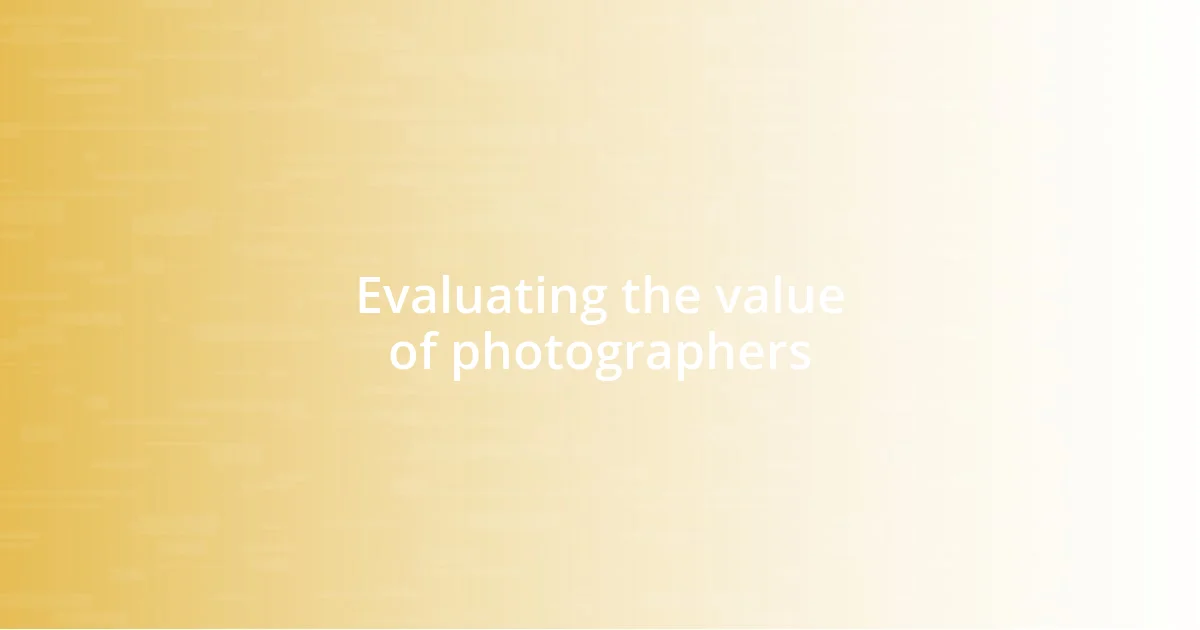
Evaluating the value of photographers
When I think about the value photographers bring to an event, I often reflect on the myriad emotions captured in a single shot. Just the other day, I was reviewing images from a wedding where the couple shared their first dance. The joy on their faces was palpable; it’s precisely those moments that underscore our worth in this profession. How often do we stop to consider that these images become lifelong treasures for our clients?
A fascinating aspect of valuing photographers lies in assessing our experience and skills. For instance, I recall a corporate event where I was able to anticipate and seize candid moments that truly told the story of the day. The client expressed gratitude for those unscripted shots, highlighting how they could connect with their audience on a personal level through the visuals. Isn’t it powerful to think that the right photographer can elevate an event from standard to memorable simply through a seasoned eye?
Moreover, it’s crucial to keep in mind that pricing isn’t just about covering costs; it’s about the emotional investment we make in our work. I once had a heartfelt conversation with a couple who were initially hesitant about my fees. After explaining how my thorough pre-event planning, passion, and commitment to capturing their unique narrative justified the price, they understood that they weren’t just hiring a service—they were investing in a storyteller. How can we communicate that deeper value to our clients?




